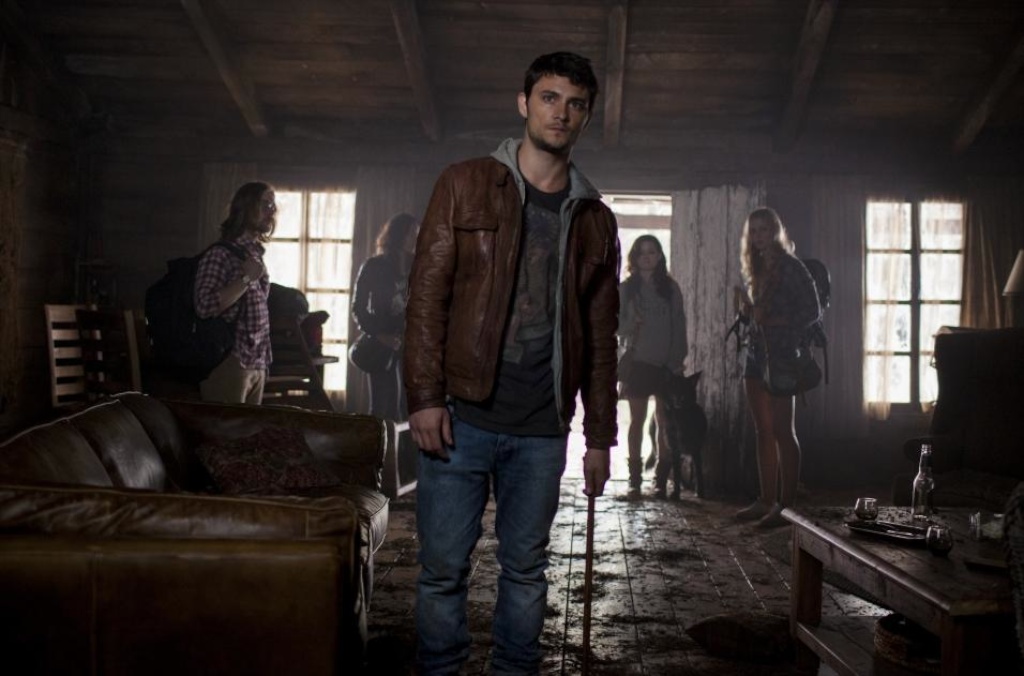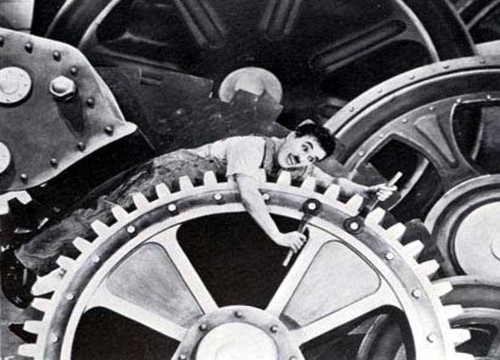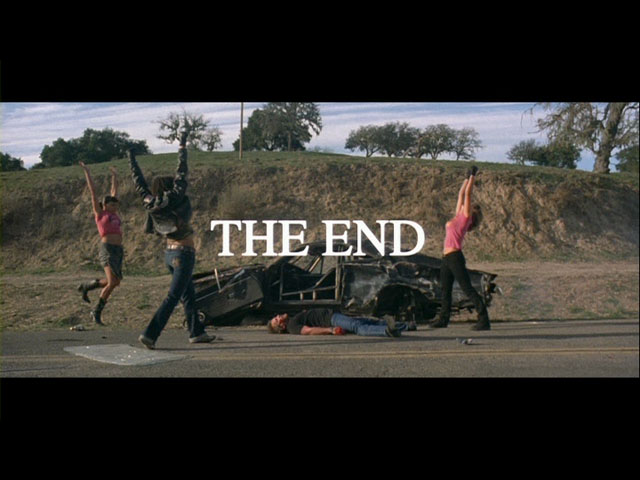Directed by Lee Hirsch
Written by Lee Hirsch and Cynthia Lowen
U.S.A., 2011
*Preface: The following review does not partake in the debate surrounding the film’s controversial ‘R’ rating in the United States.
The elementary and high school levels of a child’s academic journey make up some of their most formative years. This is true of course because of a young one’s performance in class but also for the types of interactions he or she engages in with others their age. Be a part of a supportive, inclusive group of trustworthy friends and chances are the developing child will turn out reasonably well. The flip side of the coin is the sad reality that some youngsters are never ‘part of a group’. These are the unfortunate children and teenagers whom the majority chooses to scorn, to shun, to frown upon, to intimidate, sometimes physically, to mock and to banish from their own circle of friends. If these precious years are destroyed because of the malice of other children, who knows what sort of adult they will turn out to be. In some, thankfully rare circumstances, the children and teenagers never even make it to adulthood, arriving at the conclusion that death itself is preferable to living amongst an endless sea of enemies. This is what bullying is about.
Acclaimed documentary filmmaker Lee Hirsch, most well known for bringing audiences Amandla! A Revolution in Four Part Harmony, now returns to the fold with Bully, in which he shares the stories of five circles of people, among them kids and parents who have, or had, children who were psychologically, emotionally and physically abused at school by their classmates. The film’s principal focus is on a 12 year old boy named Alex, from Iowa. Alex is the recipient of horrific bullying, especially when riding the bus to and from school, an opportunity for the others around his age to taunt, push, stab and even gently choke him. His parents also feature largely throughout the movie. The other figures the film visits occasionally are Kelby, a 16 year old lesbian whose now ostracized family lives in Oklahoma, Ja’Meya, an African American 14 year old girl who was so fed up with the torment that she brought her mother’s gun on the school bus one day which promptly earned her a sentence in juvenile detention, and two sets of parents whose children took their own lives after excessive harassment. Hirsch’s camera enters their homes, the buses they ride and the hallways they roam at school.
‘Bully is a reminder that some behaviour is not acceptable,…The infuriating thing about the entire film is that people actually to reminded of this at all.’
There can be a fine line between the sort of behaviour which will have most people agree that children are merely being their rambunctious, clumsy selves and behaviour that simply plain wrong. Wrong because it is hurtful, wrong also because it can result in worse effects than a few tears drop shed on the spur of the moment. Lee Hirsch’s gut wrenching documentary is a call to arms that hopes to wake up the people who turn a blind eye to the major problem that is bullying in schools around the world. Bully is a reminder that some behaviour is not acceptable, that action need be taken in order to bring forth a more welcoming, comfortable learning environment for all kids. The infuriating thing about the entire film is that people actually to reminded of this at all. It is not a purely objective documentary which proposes mere observation even though it does go about its mission, ironically enough, almost exclusively by observing the the attacks and allowing the victims, their parents and teachers to speak up afterwards. Hirsch has a point to make, but an incredibly important one. It is a rare instance in which even those who dislike documentaries that try hard to push a message would be hard pressed to disagree with what Hirsch, the producers and of course the subjects of the film are trying to advocate. Disagreeing with the cinematic tools employed is fair game, but certainly not the content.
And what about said cinematic tools Hirsch utilizes to get his point across? In truth, there is not much to say so far as filming techniques are concerned at least. As previously stated, Lee Hirsh really wants to world around him to play out as it normally would. True enough, the presence of a camera runs the risk of influencing people to behave differently than they otherwise would if living under their 100% regular circumstances. Little can be said to argue against such a notion. However, what unfolds in front of the camera (admittedly, the camera is never exactly in the children’s faces, usually sitting at a reasonable distance from the action) goes far, far beyond what virtually anybody would deem as acceptable behaviour, even for snotty, obnoxious children trying to tease a fellow classmate. Alex is at the end of an infinitely long list of insults and physical oppression whenever riding his bus. It is impossible to know which children were acutely aware of being filmed at the time, but in either case the situation is horrendous. Either they were not privy to being captured on film and relished in their typical mean spirited habits or, possibly worse, knew there was a camera about and still went ahead with their despicable rituals anyways. It is painfully obvious that in either scenario, there is a major problem at hand for the schools as we all the parents of the victims and perpetrators. Alex’s plight is so depressing and worrisome that at one point the filmmakers actively intervene by showing what footage they caught to the boy’s parents, which in turn has the school perform an investigation into the matter.
‘Demonstrating the intensity of the abuse unquestionably gets one aspect of the issue across, but… Bully tackles (no pun intended) a series of other, directly related issues and for that it is all the richer in terms of content.’
Demonstrating the intensity of the abuse unquestionably gets one aspect of the issue across, but director Lee Hirsch is not content with accomplishing just that. Bully tackles (no pun intended) a series of other , directly related issues and for that it is all the richer in terms of content. For one, the act of bullying defies any socially recognized categories of people. White kids, black kids, skinny kids, fat kids, straight kids, gay kids, it is open hunting season once the instigators begin the lambasting process. The only ones exempted from the abuse are the bullies themselves. Another concern are the various emotional and psychological consequences incurred by the victims. If one does not stand up for oneself, the culprits will never cease, which only leads to lower self esteem and, in the worst case scenarios, depression and suicide. There is one interview with a young boy who explains that the day he finally took a stance against his enemies, verbally that is, they never harassed him again. It is such an empowering moment to witness a young lad such as him finding the courage to tell others that what they are doing is wrong and hurtful. Hope slowly morphs into despair once more as the film depicts the attempts by parents to talk to school administrators either face to face or at town meetings. This is the last issue Bully explores, that being the support and response systems in place in the schools where it all transpires. The more accurate description is the ‘lack of support systems.’ The fact of the matter is that bullying is far too often relegated as a less crucial matter in the administrative agenda than it is in reality. For whatever reason, although one can assume that public relations and image play a part, many administrators of these respected institutions pay little heed to the cries of parents, who are then forced to take it upon themselves to advance the cause of anti-bullying, with various rallies and social gatherings where people can share their unfortunate stories and, most importantly, cry out against the oppressors and those who do next to nothing in order to stop them.
The only two things missing in Bully are, first, some interviews with those who engaged in the torment and second, interviews with their parents. Were attempts made to approach said people? If so, how is it that they failed, or was it that the content was deemed unhelpful for the purpose of the film? In any event, one wonders what those interviews would have been like…Despite there being a lack of observation from the opposite side of the spectrum, Bully remains a powerful movie, both because of the nature of its general topic and the multiple facets it explores within the subject. In a single year, only a select few documentaries really make headlines in the film world. It would come as no surprise if Bully ended up being one such doc in 2012 as its theatrical release widens.
-Edgar Chaput







